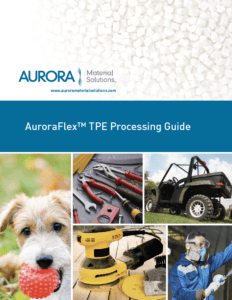TPE: Thermoplastic Elastomers
Thermoplastic elastomers (TPEs), sometimes referred to as thermoplastic rubbers (TPR), are a class of copolymers or a physical mix of polymers (usually a plastic and a rubber) which consist of materials with both thermoplastic and elastomeric properties.
While most elastomers are thermosets, thermoplastics are in contrast relatively easy to use in manufacturing, for example, by injection molding. They also can be recycled! These polymers resemble elastomers in that they are highly resilient and can be repeatedly stretched to at least twice their initial length with full rapid recovery, but are true thermoplastics and thus do not require curing or vulcanization as most rubbers.
All TPEs are composed of hard and soft segments
Hard segments contribute typical engineered properties
- Tensile strength
- Modulus/Stiffness
- Thermal stability
Soft segments contribute elastomeric properties
- Hardness
- Compression set/Tensile set
- Flexibility
- Low-temp performance
Common Thermoplastic Elastomer Applications
- Door seals, bulb seals, window seals, garage door seals, gaskets
- Custom shapes/profiles
- Wire and Cable: Power cables, auto, elevator, shipboard, oil field
- Footwear: Sole, midblock, upper, heel, foamed pads
- Soft-grips: Over-molded to Nylon, PP, PC, ABS
- Electronics: Smartphone case, backing, earbuds, non-slip feet
- Industrial:
- Hose and Tube:
- Automotive: Panels, knobs, floor mats, controls, vents, trim, seals
- Medical: Catheters, connectors, bags, tubes, instrument-handles
- Consumer: Personal care

